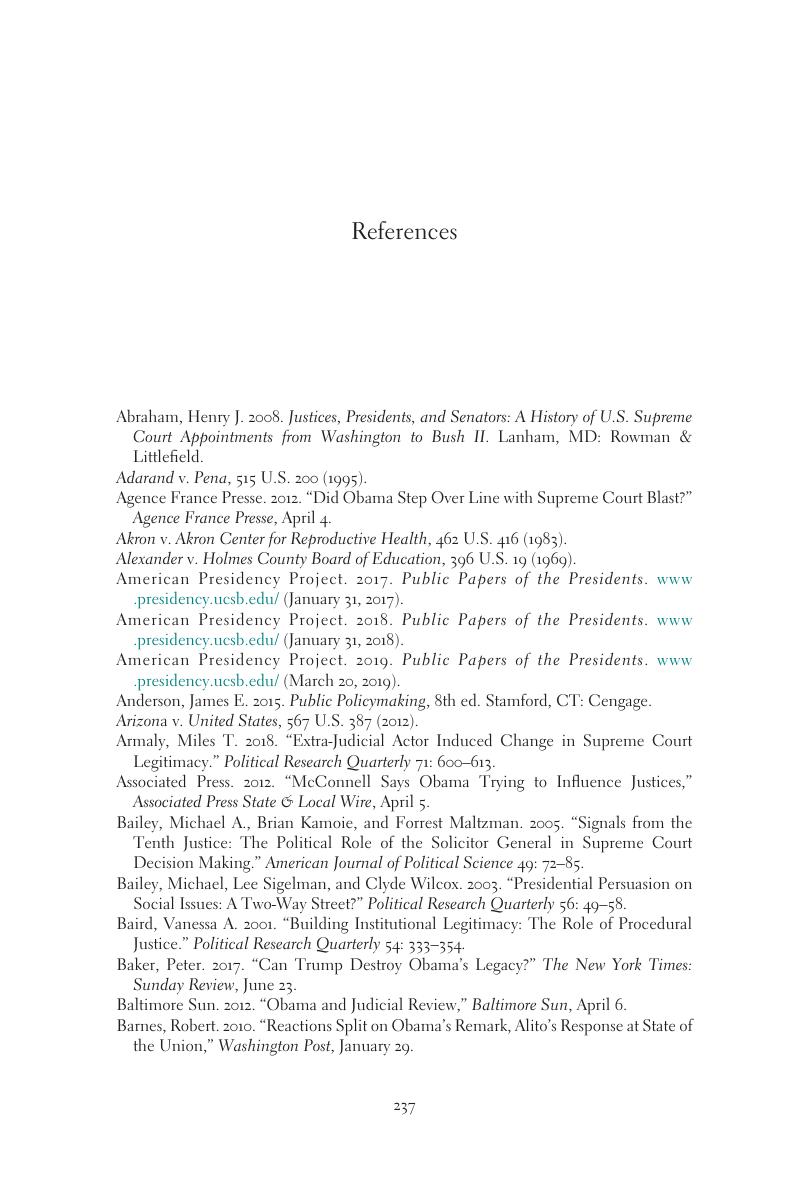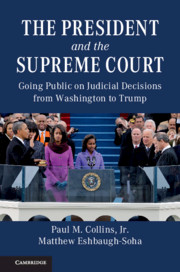Book contents
- The President and the Supreme Court: Going Public on Judicial Decisions from Washington to Trump
- The President and the Supreme Court: Going Public on Judicial Decisions from Washington to Trump
- Copyright page
- Dedication
- Contents
- Figures
- Tables
- Preface
- 1 Going Public and the Supreme Court
- 2 Going Public on Pending Decisions
- 3 Going Public on Decided Cases
- 4 The Tone of Presidential Rhetoric on Supreme Court Decisions
- 5 Presidential Calls to Congress
- 6 Presidential Leadership of News Coverage
- 7 Presidents and Public Opinion
- 8 Going Public on Supreme Court Cases before the Modern Presidency
- 9 Conclusions
- Notes
- References
- Index
- References
References
Published online by Cambridge University Press: 13 December 2019
- The President and the Supreme Court: Going Public on Judicial Decisions from Washington to Trump
- The President and the Supreme Court: Going Public on Judicial Decisions from Washington to Trump
- Copyright page
- Dedication
- Contents
- Figures
- Tables
- Preface
- 1 Going Public and the Supreme Court
- 2 Going Public on Pending Decisions
- 3 Going Public on Decided Cases
- 4 The Tone of Presidential Rhetoric on Supreme Court Decisions
- 5 Presidential Calls to Congress
- 6 Presidential Leadership of News Coverage
- 7 Presidents and Public Opinion
- 8 Going Public on Supreme Court Cases before the Modern Presidency
- 9 Conclusions
- Notes
- References
- Index
- References
Summary

- Type
- Chapter
- Information
- The President and the Supreme CourtGoing Public on Judicial Decisions from Washington to Trump, pp. 237 - 257Publisher: Cambridge University PressPrint publication year: 2020



